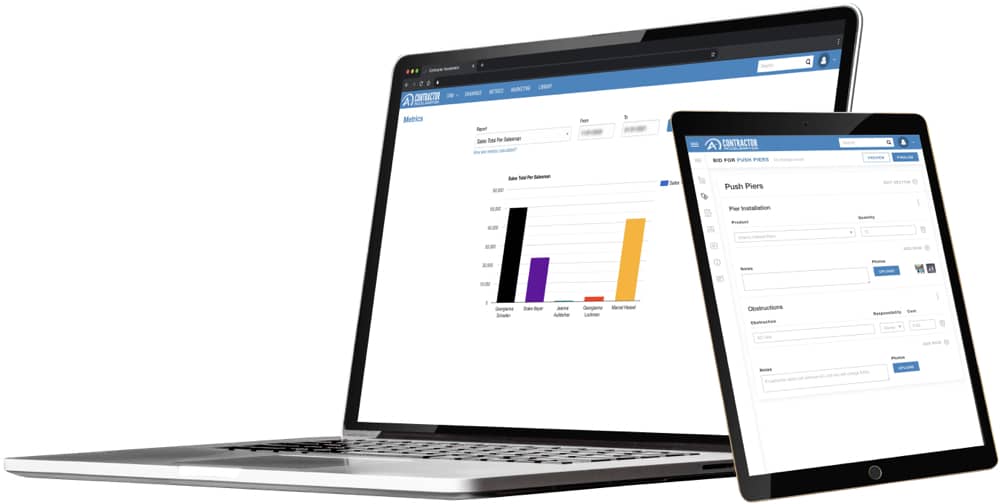What Residential Repair Contractors Need to Know About LEED Certification
Published on Oct 8, 2024
What Residential Repair Contractors Need to Know About LEED Certification
As a residential repair contractor, you may have heard of LEED certification but might not be entirely familiar with what it entails or how it can impact your business. LEED, or Leadership in Energy and Environmental Design, is a globally recognized certification program that promotes sustainable building practices. It encourages the construction of energy-efficient, eco-friendly structures, from homes to large commercial buildings. While LEED is often associated with large-scale construction, it is becoming increasingly relevant to smaller projects, including residential repairs.
Here’s what you need to know about LEED certification and how it could benefit your business.
What is LEED Certification?
LEED certification is awarded to buildings and homes that meet specific sustainability criteria, focusing on energy efficiency, water conservation, material selection, and overall environmental impact. The certification has four levels—Certified, Silver, Gold, and Platinum—based on how many points a project earns across several categories, such as site impact, energy use, and materials sourcing.
Why Should Residential Repair Contractors Care?
Even if your business focuses on smaller projects like repairs, renovations, or installations, understanding LEED principles can provide several advantages:
Increased Marketability: Homeowners and developers are increasingly interested in sustainable building practices. By aligning your services with LEED principles, you can attract eco-conscious clients and differentiate yourself from competitors.
Access to New Projects: Some developers and municipalities require or prefer working with contractors who understand sustainable practices. By showing your expertise in LEED standards, you could gain access to larger or more prestigious projects that value sustainability.
Energy Efficiency and Cost Savings: LEED encourages energy-efficient practices, including using recycled or sustainable materials, minimizing waste, and improving water conservation. By offering these options to clients, you can help them save on energy bills and maintenance costs, giving you a competitive edge.
Enhanced Reputation: Committing to environmentally responsible practices can help build your reputation as a forward-thinking contractor. In an industry driven by reviews and referrals, this can help differentiate you in the market.
Steps for Contractors to Align with LEED Standards
1. Learn About LEED and Green Building Principles
Understand the LEED Rating System: Familiarize yourself with how LEED certification works. Although individual repair projects might not directly earn LEED points, the materials and methods you use could contribute to a larger project’s overall sustainability goals.
Focus on Sustainable Practices: Implement environmentally friendly practices, such as using sustainable or recycled materials, reducing waste, and improving energy efficiency in your installations.
2. Get LEED Accreditation
Become a LEED Green Associate: This credential demonstrates foundational knowledge of green building principles. Earning this accreditation involves studying key concepts and passing an exam, showing your understanding of sustainable practices.
Pursue LEED AP Certification: For a deeper understanding, you can become a LEED Accredited Professional (LEED AP), specializing in specific areas like Building Design + Construction. This can position you as an expert in green construction and open doors to more LEED-related opportunities.
3. Use LEED-Friendly Materials
Sustainable Material Choices: Consider offering materials that meet LEED criteria, such as recycled or locally sourced materials, or those that have a low environmental impact.
Energy-Efficient Solutions: Using durable, energy-efficient materials can contribute to a building’s sustainability, helping your projects align with LEED standards.
4. Work on LEED Projects
Collaborate with LEED-Certified Professionals: Even if you’re not seeking LEED certification for your own business, partnering with LEED-certified architects or builders can help you gain credibility and experience on LEED-focused projects.
Provide Documentation for LEED Credits: When working on a project, you may need to provide documentation proving the sustainability of the materials or methods you use.
5. Educate Your Clients on Sustainable Options
Offer Green Solutions: Give your customers the option to choose eco-friendly materials or practices. Explaining the benefits of sustainability can help them make informed decisions and demonstrate your commitment to environmentally responsible practices.
6. Stay Informed
Keep Up with Industry Trends: Sustainability and green building practices are constantly evolving. Stay informed about the latest materials, techniques, and trends to ensure your business remains competitive and eco-friendly.
Conclusion
LEED certification is not just for large commercial buildings—it’s an opportunity for residential repair contractors to improve their services, attract more clients, and contribute to a greener future. By learning about LEED standards, offering sustainable options, and working on LEED projects, you can enhance your marketability, set your business apart from competitors, and cater to the growing demand for environmentally responsible solutions.
Whether you're working on small residential repairs or larger projects, understanding LEED certification and its principles can provide a valuable edge in today’s eco-conscious market.
